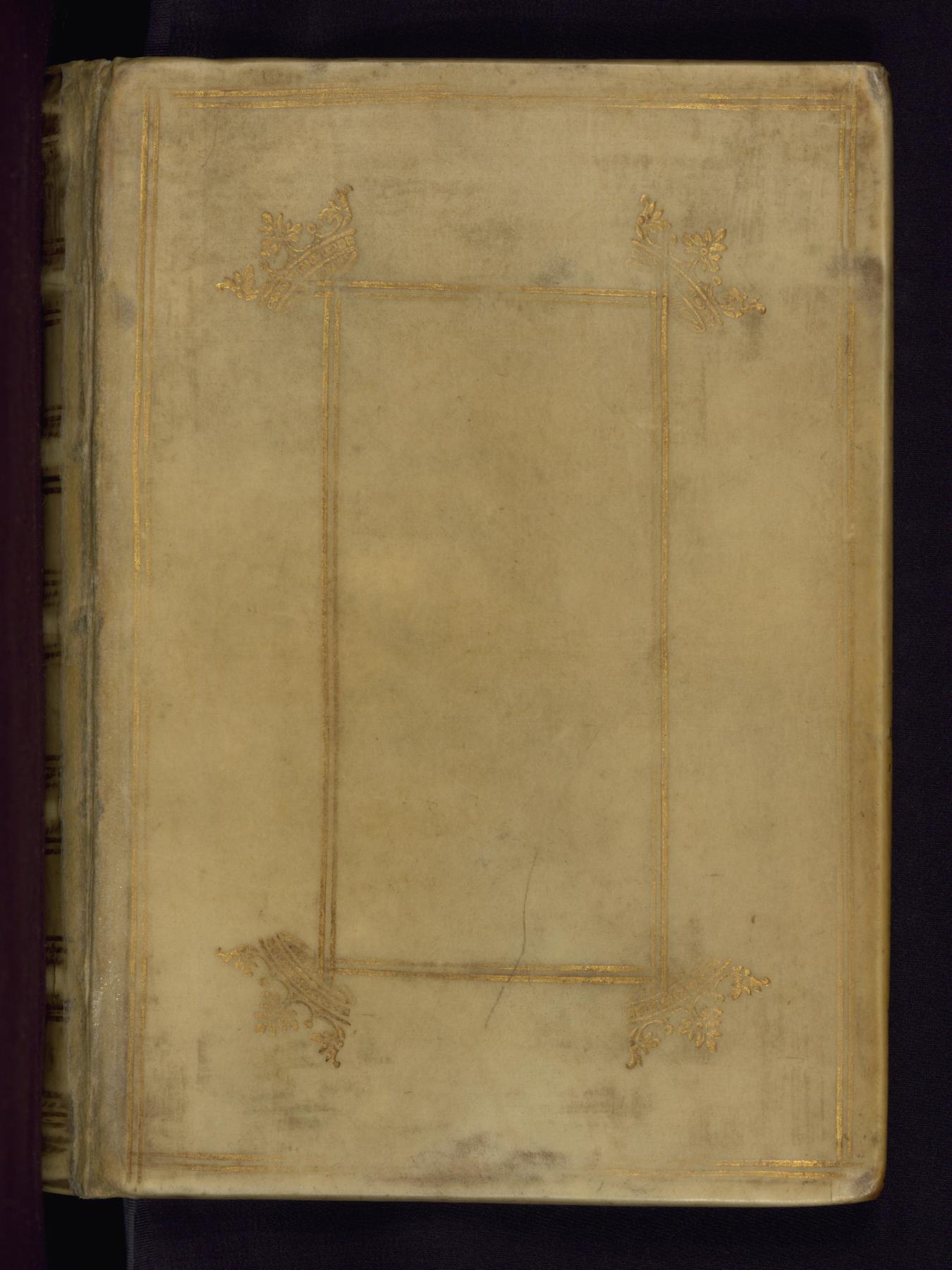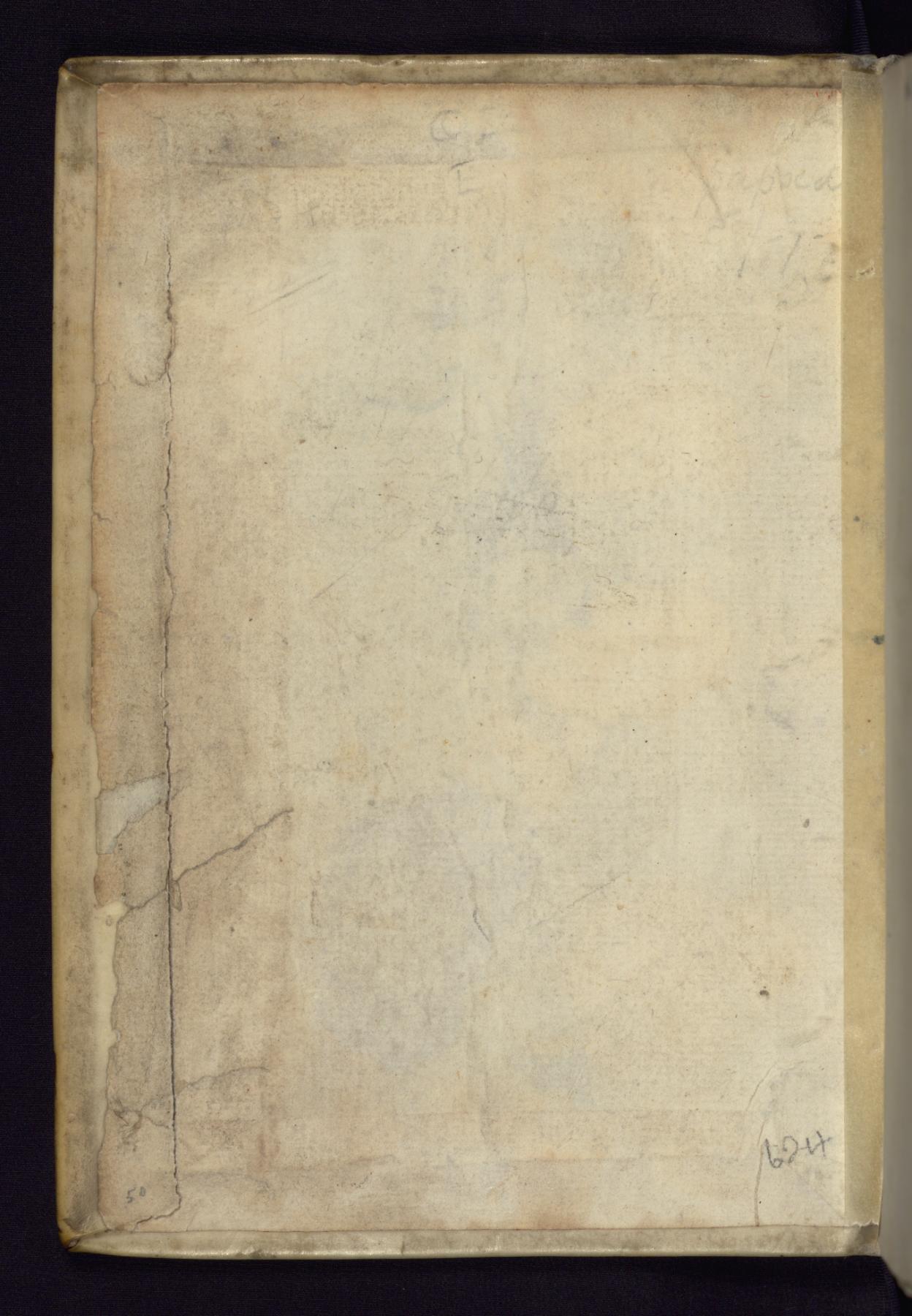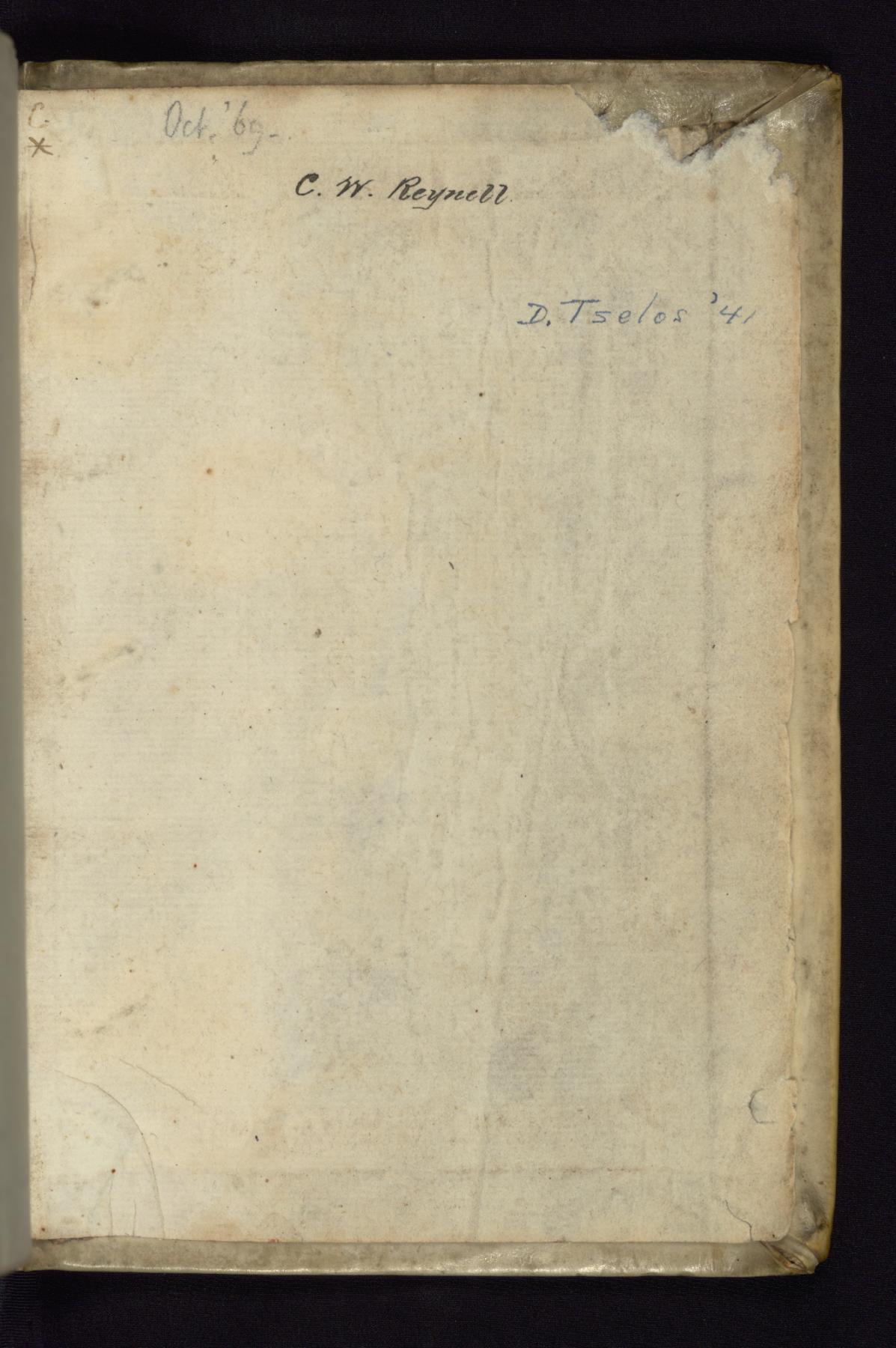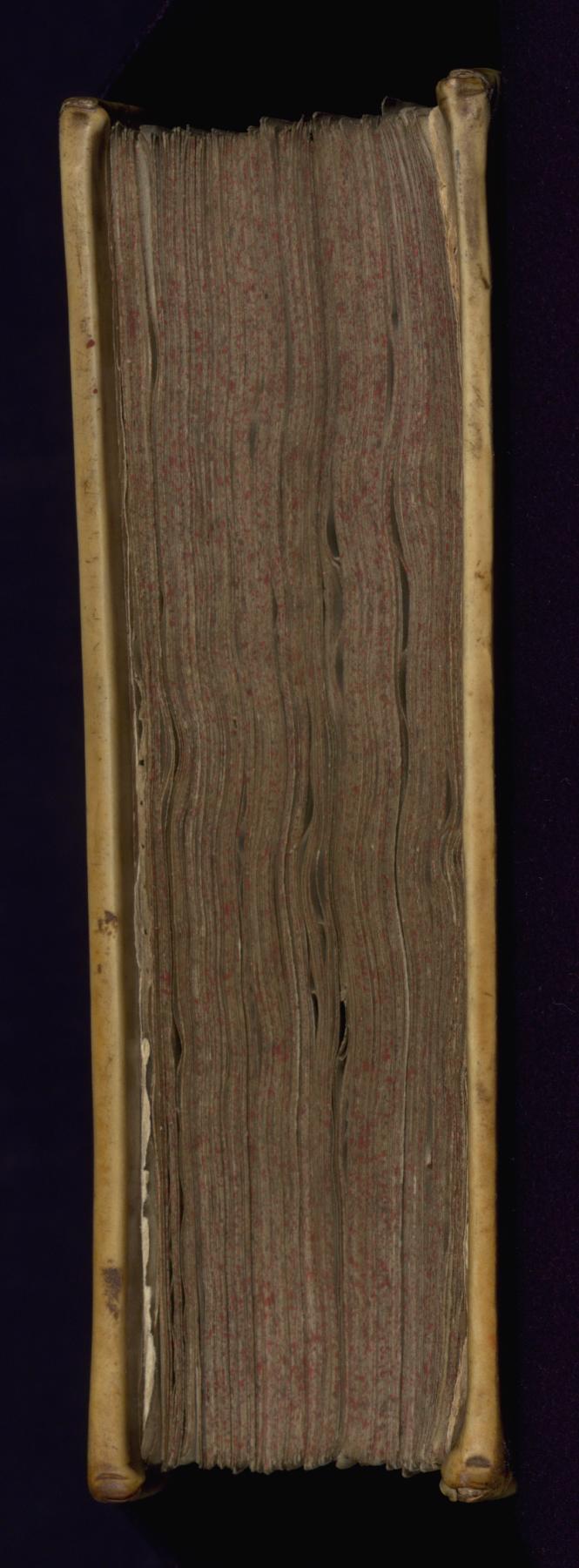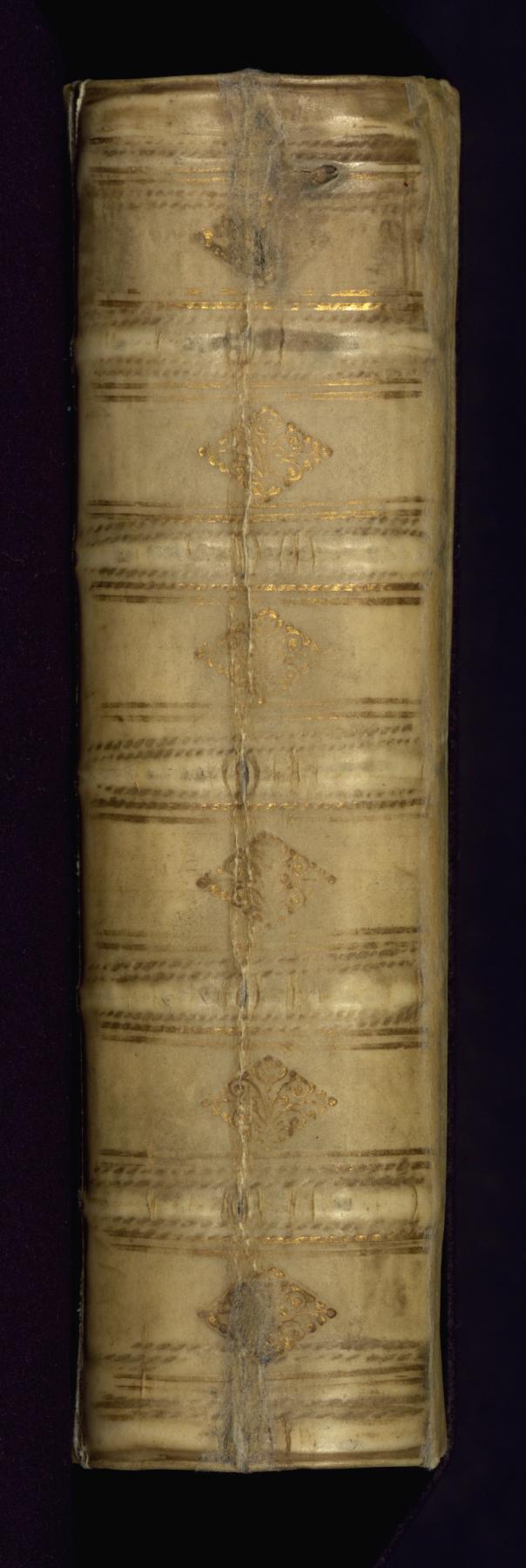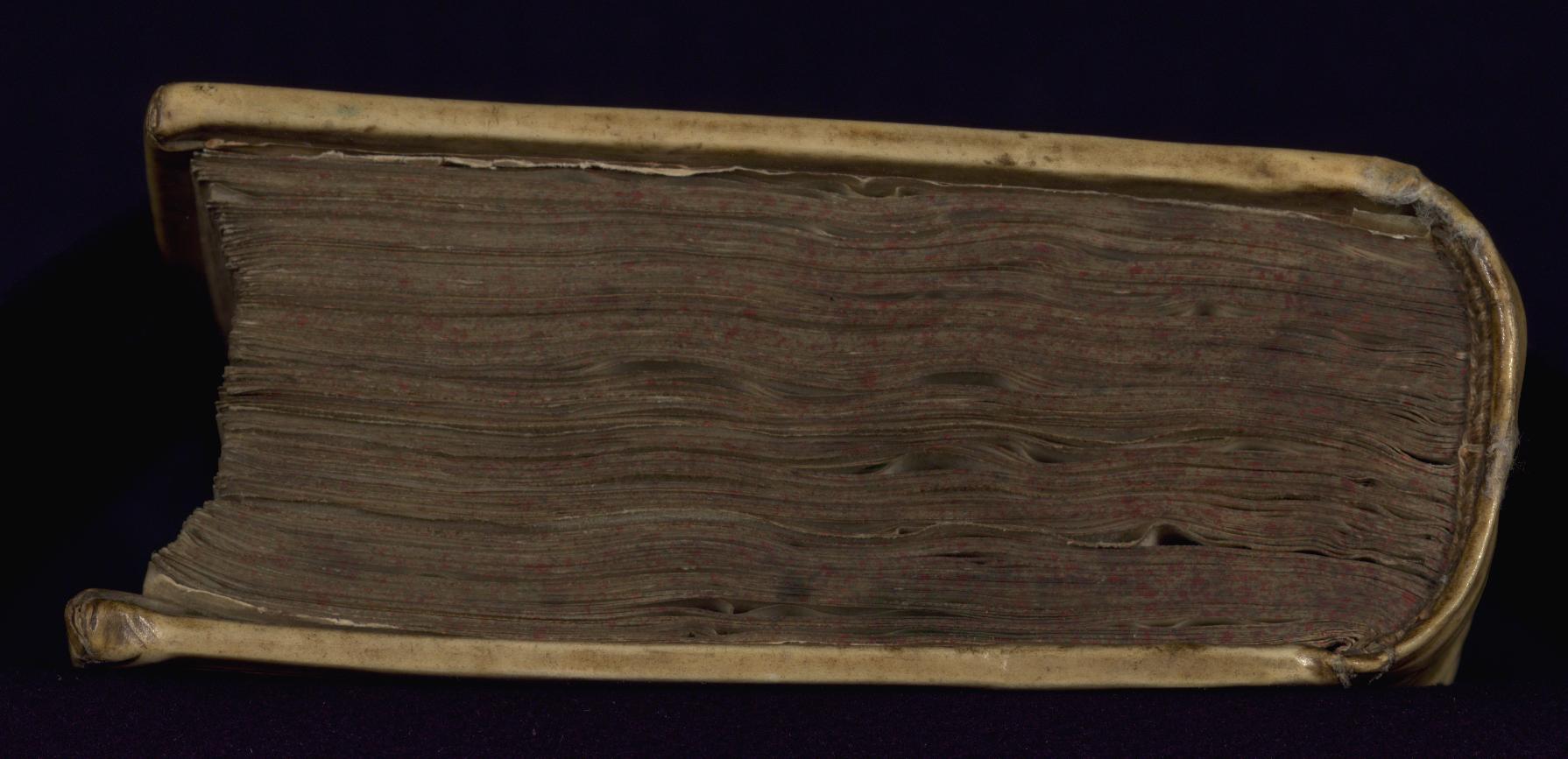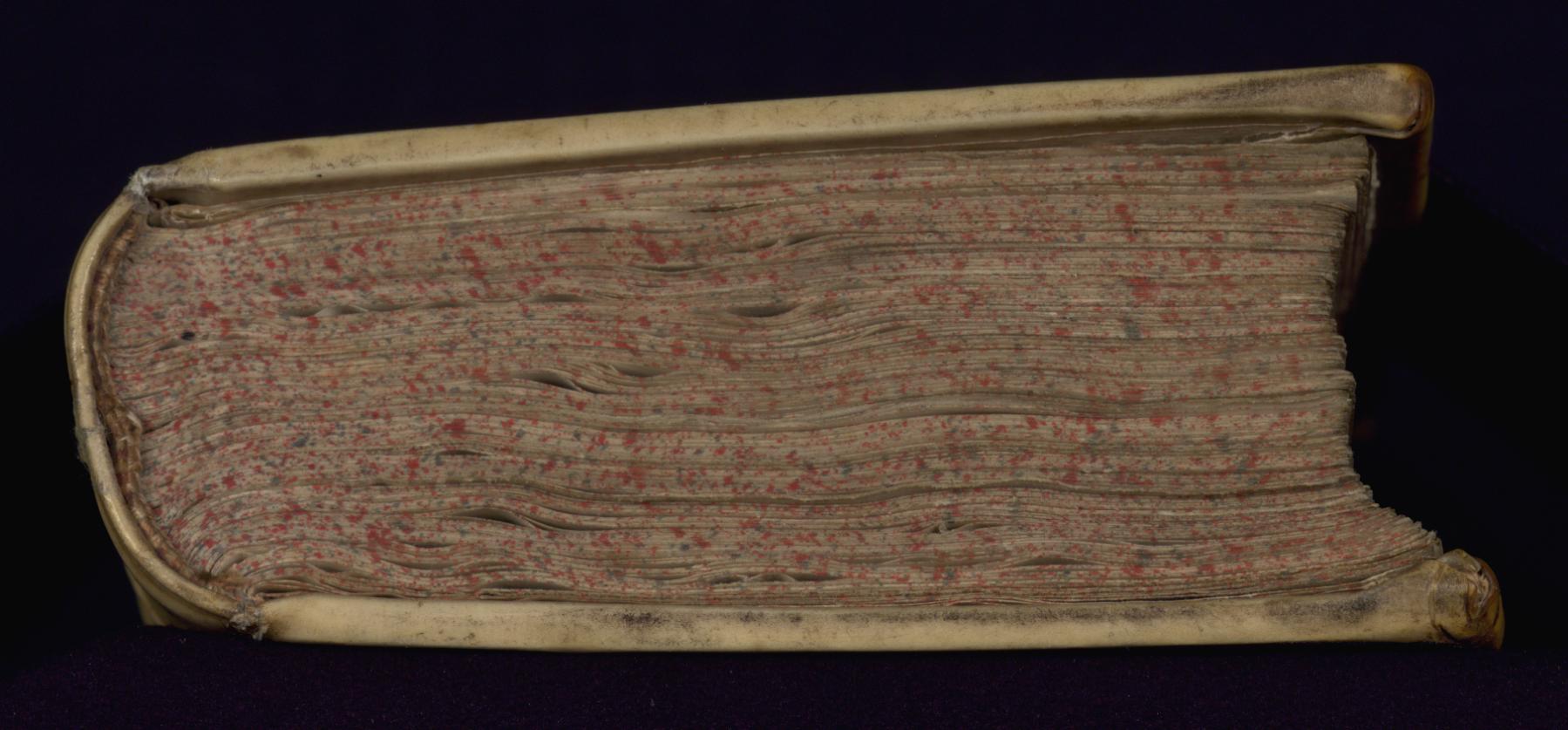Binding from Book of Hours in Dutch
(Manuscripts and Rare Books)
Late seventeenth-century Dutch binding; cream-colored vellum over pasteboard, gold-tooled; outer frame of double gold fillets enclosing an inner frame of the same, with canted gold crowns at the outside of each of the four corners (possibly bound in Amsterdam, ca. 1695 in the workshop of Albert Magnus; a virtually identical binding reproduced in Foot, Eloquent Witnesses); sewn on five raised bands; spine gold-tooled in six panels; edges speckled red
Provenance
Provenance (from the French provenir, 'to come from/forth') is the chronology of the ownership, custody, or location of a historical object. Learn more about provenance at the Walters.
Created by the "Sarijs group" of the Brethren of the Common Life in Zwolle, Netherlands, ca. 1470 [armorial device found on fol. 52r, but may be decorative and not indicate original ownership]; Charles W. Reynell, London, ca. 1860 [ownership inscription in ink on back pastedown]; C. H. Reynell, Memphis, Tennessee, by inheritance [his sales at Sotheby's, London, July 5-7, and July 26-28, 1937]; Dmitri Tselos, Minnesota, 1941, by purchase in Europe; George Tselos and Susan E. Tselos, by inheritance; Walters Art Museum, 2006, by purchase.
Geographies
Netherlands, Zwolle (Place of Origin)
Measurements
H: 5 11/16 x W: 3 7/8 in. (14.4 x 9.8 cm)
Credit Line
Museum purchase and partial donation by George Tselos and Susan E. Tselos in memory of their father Dimitri Tselos, 2006
Location in Museum
Not on view
Accession Number
In libraries, galleries, museums, and archives, an accession number is a unique identifier assigned to each object in the collection.
In libraries, galleries, museums, and archives, an accession number is a unique identifier assigned to each object in the collection.
W.918.binding

